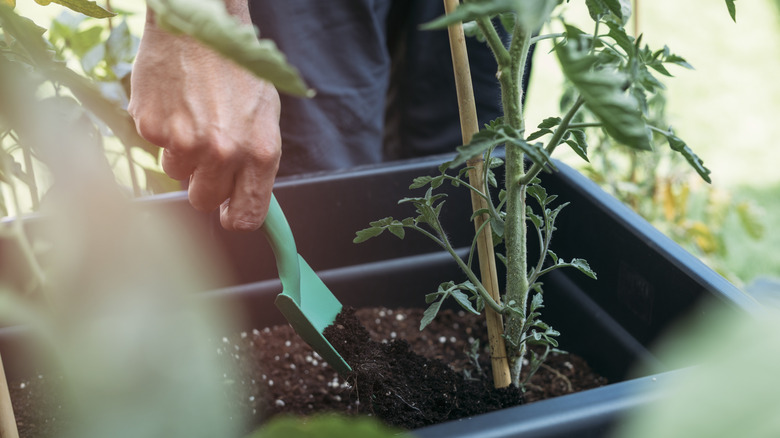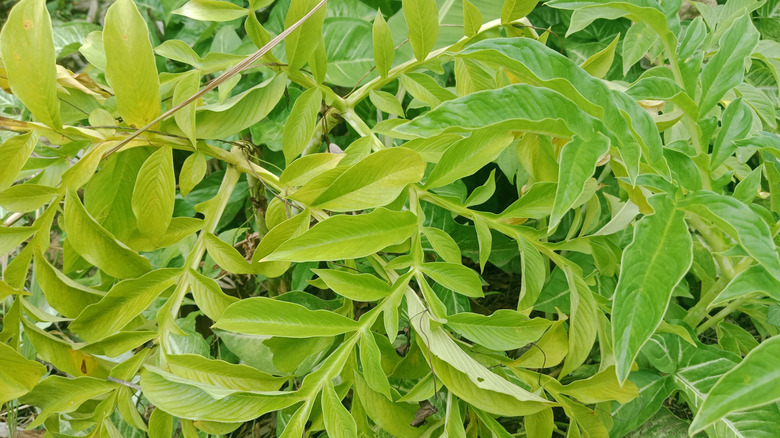Is Chlorophyll A Good Plant Fertilizer? Here's What We Know
We may receive a commission on purchases made from links.
If you've already tried every trend, from coffee grounds to eggshells, to give the plants in your garden a boost, you might find yourself reaching for a new idea — maybe a homemade chlorophyll-rich fertilizer — especially if your plants still look lackluster despite your efforts. But does this green gold really help in the fertilization of plants, or is it just another gardening myth? Homemade chlorophyll fertilizers are popular because they're easy, affordable, and organic, and they may reduce the dependence on chemical-based products. However, there isn't significant scientific evidence available to say whether it will help your plants or if you're wasting time and resources.
Chlorophyll is the green pigment responsible for photosynthesis — the process that helps plants turn sunlight into energy. When a plant looks pale or has yellowing leaves, it might be due to a lack of chlorophyll, which could hint at a deeper nutrient deficiency, and some gardeners believe chlorophyll-rich blends can help bring them back to life. Knowing your plants' nutrient needs is very important, so it pays to learn how to identify and treat nutrient deficiencies in plants like a gardening pro to avoid surprises.
Does chlorophyll really work as a fertilizer and should you try it?
When gardeners use homemade chlorophyll mixtures, they're not technically feeding the plant. In fact, plants may not be able to absorb chlorophyll from the soil directly; however, plants do absorb nitrogen from the soil. Nitrogen is a building block of plant proteins, an integral part of chlorophyll, and a component of amino acids and nucleic acids. Roots absorb these nutrients, which support their production of chlorophyll, leading to stronger growth and healthier foliage.
Still, gardeners love to experiment, and many are adding chlorophyll water to their plants. To create your own chlorophyll solution, gather the greenest leaves from hardy, evergreen shrubs. Blend them with about a quart of water until you have a deep green mixture. Strain out any remaining solids, then gently heat the liquid in a hot water bath for 5 to 10 minutes to help release the pigments. Once cooled and diluted, this mix can be used to water your plants every few week. While it is easy to extract chlorophyll from plants, you might consider buying ready-made liquid chlorophyll. You can also explore other organic fertilizers that'll do wonders for your garden soil, like alfalfa meal.
This solution may be a simple, natural complement to your regular fertilizers. Worst case scenario: There's no evidence it will cause any harm. To determine if chlorophyll is helping your plants, keep an eye on leaf color and structure. Healthy, perky leaves are a great sign, but if your houseplant is turning purple, it could signal other issues. If you enjoy experimenting and want to give your plants a natural boost, it's certainly worth a try, just remember to pair it with proper nutrition and care.

